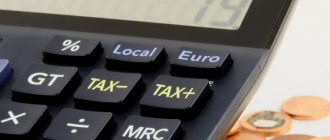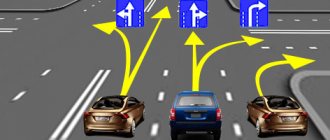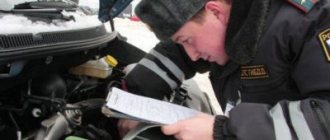All drivers are well aware that vehicle maintenance is part of its operation. However, there is still a category of car owners who believe that no one needs a scheduled vehicle inspection with the replacement of spare parts recommended by the manufacturer and that it is simply a waste of money.
Is it really? What is scheduled maintenance? What is it like? What does it include and how often should it be done for different car brands? Is it necessary to do this at all? Experts answer questions, express their opinions and give advice.
So. Why carry out routine maintenance?
First of all, you need to understand that car maintenance itself is a preventive measure that is aimed at preventing possible problems in the early stages. Those who believe that waiting for a part to fail and then replacing it will be more economical than undergoing scheduled maintenance are deeply mistaken. Any car service center will confirm that car repairs are much more expensive. And even if you have a new car of a global brand, the laws of physics work on its units in the same way as on cars with high mileage, so even a small error in operation or a malfunction identified during diagnostics allows you to avoid serious breakdowns or even accidents.
Moreover, unlike cars of previous generations, a modern car is a complex of complex units controlled by electronics, so it cannot be done without computer diagnostics and other measures.
How long does it take for the film to dry?
There is no clear answer to this question. A variety of environmental parameters influence. In summer, the sun dries much faster. On average, glass takes about a day to dry. Even if it rains, because the film is applied to the inside of the glass, which means that precipitation does not affect it.
In winter, the tint can take up to a week to dry. Here again, a lot depends on the weather, as well as the characteristics of operation. If you constantly drive a car, use a stove or climate control in heating mode, drying will naturally go faster.
Often, when tinting a car in winter, it is placed in a warm garage. Or in a regular garage they turn on a heat gun. This makes it possible to significantly increase the drying speed of the adhesive film, even at subzero temperatures. We’ll tell you more about how to properly dry tint using a heat gun at the end of the article.
The drying speed is affected by how well the moisture has been removed from under the film. This procedure is done immediately after gluing the tint onto the glass. If you remove water of insufficient quality, it will take longer to dry, especially in winter.
To remove excess water, use a rubber spatula to move it from the center of the car windows to the edges. Light pressure is required. So it turns out that the water will gradually be expelled out. There is a slight difference for the rear window. The movements are also from the center to the edges, but you need to move parallel to the conductive elements. Otherwise, you will not be able to efficiently remove all the moisture; it will be retained by the conductors.
As a rule, this work takes up to half an hour per glass. It’s better not to waste time and do everything efficiently. Otherwise, you will wait longer for it to dry on its own. At the same time, you can remove any air bubbles. Actually, usually these works are combined and done simultaneously.
In most cases, you can visually determine the drying time of the film on the car. As soon as the cloudiness disappears, the tint can be considered dry. After this, you can use the car without restrictions.
Important!
Do not turn on the rear window defroster until the tint is completely dry. If you turn on the heating, there is a risk of uneven polymerization of the glue. As a result, small swellings will occur, which will negatively affect the appearance of the car.
How much does maintenance cost and can you save money on it?
Obviously, a technically trained car owner can carry out some types of work independently. In this case, a maintenance schedule must still be drawn up and if necessary, for example, computer diagnostics of systems or other complex activities, you should contact a car service center.
All this is true for cars with high mileage. But if it is necessary to maintain the warranty of a showroom car, you cannot do without contacting authorized auto centers and undergoing maintenance there with the appropriate marks in the service books. You can save money only if the service allows you to undergo maintenance with its consumables.
In addition, you need to understand that prices for maintenance at authorized car services, even within the same official dealer, can vary greatly. This also applies to the materials they use. Practice shows that if you are not lazy, call different services and compare prices, you can save up to 20% on work and up to 50% on materials.
The conclusion is simple. Scheduled maintenance is necessary, you can try to save money on them, but you absolutely cannot risk your car and ignore them!
conclusions
Depending on the time of year and ambient temperature, drying of the film can last from a day to a week. Since the material is applied to the inside, precipitation does not affect the drying speed.
Also keep in mind that you should not use power windows on your car immediately after gluing. They can damage the uncured film. The period of “ban” on use is approximately the same as for drying the tint.
Take your time, after waiting the allotted time, you will be able to use a well-tinted car longer. There will be no swelling or clouding, which will improve the appearance of the car.
Nuances you should know about
When to undergo a technical inspection on a new car is already clear, but there are some nuances that every vehicle owner should know about:
- The age of a car is determined not by the year it began operation, but by the year it was produced.
- In practice, a situation may arise where some insurance companies require a diagnostic card. They justify this by the fact that in the event of an accident, the owner of the car will not be paid for material damages, since he did not provide them with confirmation of the serviceability of the car - a diagnostic card. This requirement is not legal, so the correct decision would be to choose another insurance company.
- If a driver plans to drive a new car outside the Russian Federation, it is important to pay attention to the requirements of international conventions. Since one of the documents that must be presented at customs posts is a diagnostic card, which will confirm the serviceability of the vehicle. Sometimes this document is not enough for customs officers and they can conduct a technical inspection at the inspection site using special equipment.
- In addition to the above, it is important to pay attention to technical wear and tear. The condition of the car depends on driving style, quality of operation and other circumstances.
You should always remember that if there is a serious malfunction that was not identified because the vehicle was not inspected until the car was three years old, the car can cause significant harm to road users.
Therefore, experts advise that you still undergo vehicle maintenance for your own peace of mind.
In accordance with the law, passing a technical inspection for a new car is not required. No one will check the presence of a diagnostic card.
When concluding an MTPL agreement, insurance organizations also do not have the right to demand it. A diagnostic card for a new car may only be needed when selling it.
Video: When do you need to undergo a technical inspection after registering your car?
Vehicle diagnostic card
Each card is certified by a technical expert. Written out by hand, has two copies. The electronic version is made in one copy and is assigned a unique identification number. One of the written copies remains with the owner, and the second copy is kept in the expert department and is stored there for 3 years.
Documents in the electronic version are sent to the archive of the vehicle technical inspection information system (to EAISTO), where they will be stored for another 5 years.
The state duty for obtaining technical cards or their duplicates is no longer charged.
The new maintenance form was approved by order of the Ministry of Transport. And now there is a clear list of basic requirements for coupons:
- The card blank is green and measures 105*74 mm. Must be replicated on an electronic printing device.
- Each document has its own 10-digit number; it is printed using letterpress printing and glows green under infrared radiation.
- These are printed products with class B level of protection against counterfeiting.
When is a diagnostic card needed?
The diagnostic card is an important document for issuing an MTPL policy . It can be considered an analogue of a technical inspection ticket.
A distinctive feature is its content, information about the condition of the components and assemblies of the car is more detailed.
And the most important thing is the conclusion about whether the vehicle meets the special requirements and standards approved in European countries.
Changes in legislation allow you to refuse to undergo a technical inspection if the car is less than 3 years old. In 2019, even without a diagnostic card, you can apply for an MTPL policy for a new car.
The procedure for obtaining a diagnostic card has changed significantly:
- Now the traffic police do not take part in maintenance. Authorized stations are responsible for this. Their employees must conduct a thorough inspection of the car, and record the results in two paper and one electronic copies of the diagnostic card.
- One copy is given to the owner of the car; the operator enters all information electronically into the EAISTO system.
- If a person loses the diagnostic card, he will not face the same problems that he would have to face if he lost the car purchase agreement. The car owner can receive a duplicate of the diagnostic card even on the day of application after paying the state fee.
Despite the fact that a diagnostic card for a new car is not required, you should not delay too long in insuring your car under a compulsory motor liability insurance policy. Compulsory insurance always makes it possible to feel calm and confident on the road.
Sometimes situations arise when obtaining a diagnostic card for a new car may be necessary.
In the case of a sale or purchase, the future owner may insist on an inspection to ensure that his new property is in excellent condition.
Questions on the topic
Filter:AllOpenSolvedClosedWaiting for response
What does flexible maintenance interval mean? SolvedUser answered 4 days ago
6 views 1 answer. 1 vote.
The message Opel Astra J is due for maintenance is on. How to reset? Answered by User answered 4 days ago
6 views 1 answer. 0 vote.
What to do if your car is damaged during maintenance at the dealership? Answered by User answered 4 days ago
6 views 1 answer. 0 vote.
How often should brake fluid be replaced? Answered by User answered 4 days ago
6 views 1 answer. 0 vote.
How to properly bleed brakes? Answered by Vitaly answered 4 years ago • Brake system
368 views 1 answer. 0 vote.
Is it necessary to do a wheel alignment after replacing shock absorbers, silent blocks and ball joints? Answered by User answered 4 years ago • Questions
307 views 1 answer. 0 vote.
How to adjust the handbrake on a Mazda 2 (2012 model)? AnsweredPeter answered 4 years ago • Brake system
442 views 1 answer. 0 vote.
What is the cheapest way to get a car under warranty? AnsweredOleg answered 4 years ago • Questions
173 views 1 answer. 0 vote.
Ask a Question
Radiator
The radiator should be washed as a layer of dirt accumulates on it. Some people recommend every year. A reasonable interval is 2–3 years.
The radiator should be washed as a layer of dirt accumulates on it. Some people recommend every year. A reasonable interval is 2–3 years.
Officials zealously monitor the timely replacement of all working fluids. Unofficials - depending on how. If the car is old, do not forget that the coolant loses its properties over the years.
And the radiator itself often needs to be washed - especially if the car is used a lot in the summer in suburban conditions, where there are a lot of insects and all kinds of flowering products.
Video: Maintenance expert advice
A vehicle diagnostic card is issued by any accredited service center of the PCA after the vehicle has passed the vehicle inspection. The diagnostic card is a failure-extract in A4 format, which contains tabular values of all information about the car. The result of the inspection is a conclusion about the possibility/impossibility of operating the vehicle for its intended purpose.
The frequency of vehicle inspection depends on the category of the vehicle and the age of the vehicle.
A complete list of what will be checked
What should you have in your vehicle when undergoing inspection?
- Medical kit. It should always be in the car. Be sure to have medications that have not expired. What to put in it? Painkillers (analgin, aspirin), dressings (bandage, tourniquet), cardiac medications (validol), scissors, case, Corvalol, valerian, first aid instructions.
- Fire extinguisher. The location is determined by the manufacturer at the factory. If there is no space, then the fire extinguisher should be placed in an easily accessible place. Powder and carbon dioxide fire extinguishers are used for cars.
- A flashlight with a flashing red light or a brake light.
Why is it necessary to undergo vehicle maintenance?
Maintenance is a procedure for routine replacement of vehicle consumable parts. The procedure can be carried out by dealers, other services, and vehicle owners. If the owner of a new car does not undergo maintenance, he will be denied repairs.
During maintenance, consumables and parts are replaced, for example:
- Spark plug;
- Engine oil;
- Other filters.
Diagnostic errors are also checked using special software. Maintenance is a procedure for checking the technical condition of cars that are under state control. Government authorities are responsible for safety on the highway. As a result, stricter rules are established.
Technical inspection may only be carried out by accredited operators. The cost of maintenance for the service starts from 500 rubles. The price depends on the vehicle and the region of location.
Technical inspection is a mandatory procedure and if a citizen has not passed the inspection, he cannot purchase compulsory motor liability insurance. If the owner drives a car without insurance, then a fine of 500 to 800 rubles is imposed. Without a diagnostic card it is impossible to obtain compulsory motor liability insurance.
Drivers who drive vehicles in category B are exempt from administrative liability for failure to undergo maintenance.
You need to undergo maintenance every year if the car is more than seven years old. What vehicles are included in this list?
- Cars;
- Trucks with a permissible weight of up to 3.5 tons;
- Trailers;
- Semi-trailers;
- Motor vehicles depending on the period of use.
Every six months you need to undergo a technical inspection:
- Passenger taxi;
- Cars that are designed to carry 8 passengers;
- A vehicle intended for the transportation of dangerous goods.
Before passing the technical inspection you need:
- First of all, find out how much an inspection costs. The price should not exceed the established standards.
- Check components.
- Wash the car, since companies often refuse to accept vehicles due to the fact that it is impossible to read the license plates and determine the real color. Some organizations already have a sink installed.
- You need to collect documents.
Wheel alignment
Wheel alignment can also be classified as an operation that fits the description “the more often the better.”
Wheel alignment can also be classified as an operation that fits the description “the more often the better.”
Many auto repair shops are ready to offer wheel alignment diagnostics at reasonable rates. But this is not included in the factory regulations. Everyone will be quite happy if you kill a set of tires in one season.
According to science, wheel alignment requires checking every 15–20 thousand km or “once a year.” If you often drive on bad roads, actively deforming rubber parts of the chassis, it is appropriate to add wheel alignment to the scheduled work.
New rules for passing maintenance
The vehicle is inspected by a technical expert working for the selected operator. It issues diagnostic cards with permission/prohibition for vehicle operation. From May 4, 2021, all motorists will receive a ticket if the procedure is successful and if there are any inconsistencies with mandatory safety requirements, but in this case, the diagnostic card will be marked and the existing faults will be entered.
Safety assessment procedure:
- Instrumental diagnostics.
- Regulatory checks regarding license plates, fire extinguisher and first aid kit.
- Braking system assessment.
- Assessment of lighting characteristics and equipment.
- Assessment of steering and suspension play.
- Assessment of exhaust gas toxicity.
- Diagnostics of locking mechanisms.
- Regulatory testing of technical fluids.
Vehicles from categories N 1-2 and M 1-3 are checked for the functionality of the emergency alert system. But since not all cars are yet equipped with such buttons, the rule applies only to those that have them from the assembly line.
What is checked during the inspection?
Specialists conduct a general inspection of the vehicle:
- Quality of door locks;
- Availability of a fire extinguisher;
- Availability of a first aid kit and its contents;
- Performance of windshield wipers and washers;
- Quality of mirrors and glass;
- Seat belt performance;
- Sound signal quality;
- Condition of the seats;
- Availability of sun visors.
In addition, the harmfulness - the quality of the toxins produced by the machine - is checked. They are more loyal to old cars. The CO2 test should not exceed 4.5 percent. Those cars that are not equipped with neutralizers are tested for CO2, CH in two modes: idle mode and at high speeds.
If the car is new and powerful, a test is carried out for O2, CO2 . In order to go through all the stages faster, you can check them yourself and bring documents as confirmation. Experts test brakes on a simulator or on real roads. To check on the roads, you need a perfectly flat track. This option is tested very rarely; preference is given to simulators.
The steering wheel is checked by connecting all parts, the braiding, the total play, and the quality of rotation are inspected.
In addition, engine analysis, wheel quality and light testing are carried out. It is better to undergo a technical inspection in the summer. Usually in winter you are asked to remove your winter tires.
Basic requirements for the car and inspection:
- Owners who have not installed film on their headlights will not receive a conclusion.
- Even a slight leak of fluid in the power steering system is not acceptable.
- Availability of a first aid kit. If the vehicle category is D, then there should be three first aid kits.
- Anti-slip studs must be installed on all wheels.
- Cars without gas equipment registration will not pass MOT.
- Availability of two types of diagnostic maintenance card - electronic and paper.
Documentation
How often should you have your car inspected?
The timing of the technical inspection and the validity of the diagnostic card depend on the year of manufacture of the car.
The frequency of maintenance depends on the class of the machine and the purpose for which it is used:
- periodicity is 2 years for cars if 3 to 7 years have passed since its production (the year of manufacture is the date indicated in the vehicle passport).
- after 1 year for cars, if more than 7 years have passed since production , taking into account the year of manufacture.
Procedure for technical inspection of vehicles
The inspection rules stipulate that the inspection is carried out by an expert. Based on the procedure, the owner receives a card with a conclusion on the possibility of further operation of the car.
If the vehicle has passed the technical inspection, the citizen will be given a ticket. If not, you will need to be examined again. In addition, you need to remember that repeated maintenance also costs money.
If the driver chooses the same operator who carries out the first maintenance, then only those data that did not pass certification the first time need to be checked. If another operator is working, then you need to pay the cost for the entire inspection and the inspection will start all over again.
To undergo a technical inspection, you must pay for the service. In Moscow and the region the price varies from 600 to 700 rubles, in St. Petersburg – 800-900 rubles. In the Altai Territory, a technical inspection will cost only 300 rubles.
Where and how does everything happen?
There are several options for where to get your inspection. The first way is to go to the dealer after purchasing the car.
The second way is to undergo a technical inspection at a service center that is accredited by the RSA (Russian Union of Auto Insurers). The service can be found closer to work or home.
You can undergo MOT not only at the place of registration, but also in all regions. The technical inspection process will be recorded using video. What should be recorded?
- Progress of the review;
- Date of;
- Vehicle registration number;
- Maintenance point.
First, the documentation is verified. PTS and STS must be checked. The inspector checks information about the driver of the vehicle.
What questions will the employee be interested in?
- Is the citizen the owner of the car?
- Do you have a driver's license?
- Do you have rights and are they expired?
- Does the category of the vehicle correspond to the type of vehicle;
- Is there a power of attorney from the owner?










